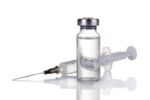Two separate works are part of the MATRIX study investigating strategies to reduce bleeding and mortality in patients with acute coronary syndrome. The first part of the work that was simultaneously published in The Lancet found a significant reduction in major bleeding and mortality in patients undergoing coronary angiography and angioplasty using radial versus femoral...
BRIGHT: Bivalirudin versus heparin versus heparin plus tirofiban in primary angioplasty
The HORIZONS-AMI and EUROMAX studies, had already shown that bivalirudin is superior to heparin plus inhibitors IIB / IIIA glycoprotein in reducing adverse clinical events in patients suffering an ST-segment elevation myocardial infarction undergoing primary angioplasty, at the expense of increase in the rate of acute stent thrombosis. This study included 2194 patients undergoing an...
Bivalirudin superior than heparin beyond the use or not of Glycoprotein inhibitors
Bivalirudin benefits in bleeding events versus heparin plus glycoprotein IIbIIIa inhibitors is clear even though this benefit has not been fully studied at the point whether persists when glycoprotein inhibitors are used only for rescue and not routinely. This is an EUROMAX sub-analysis that included 2198 patients experiencing AMI analyzing events at 30 days. Bivalirudin...
From Horizons to Euromax: Bivalirudine or UFH/IIbIIIa?
Stone, Gregg W. (USA )2014-04-24
HEAT PPCI: Bivalirudin raises major cardiac events and does not reduce bleeding. The most controversial and criticized study at the ACC 14.
This randomized trial of a single center with consent obtained after randomization compared the use of bivalirudin versus heparin with the use of glycoprotein inhibitors arescue only in patients having ST segment elevation myocardial infarction.The primary efficacy endpoint was a composite of death, stroke, and myocardial revascularization of the target lesion and the primary safety...
SCAAR: Heparin versus bivalirudin in patients with myocardial infarction without ST segment elevation.
We evaluated 41,537 patients admitted with myocardial infarction without ST elevation on the SCAAR register and who had not received IIBIIIB glycoprotein inhibitors and divided them into two groups: 31,351 patients who received heparin versus 10,186 who received bivalirudin. We adjusted baseline characteristics of the two groups using the Propensity score with the exception of...
EUROMAX: Bivalirudin during transport to primary angioplasty
The HORIZONS AMI trial showed the usefulness of bivalirudin in reducing mortality and bleeding compared with the use of heparin plus glycoprotein IIBIIIA. However, some questions remained unanswered: What is the utility of starting the infusion during the ambulance journey? Is it possible to reduce the risk of acute thrombosis by extending bivalirudin infusion or...
EUROMAX: Early and prolonged infusion of bivalirudin reduces mortality in AMI
Bivalirudin reduced mortality and bleeding compared to heparin and glycoprotein IIbIIIa in HORIZONS- AMI study. However there was a higher rate of acute stent thrombosis in patients receiving bivalirudin. This randomized study (> 90 % randomized in the ambulance) enrolled 2218 patients with ASTEMIto prolonged infusion of bivalirudin compared with heparin -associated glycoprotein inhibitors. The...
Net clinical benefit of bivalirudin in STEMI patients
Original title: Bivalirudin Versus Heparin With or Without Glycoprotein IIb/IIIa Inhibitors in Patients With STEMI Undergoing Primary Percutaneous Coronary Intervention: Pooled Patient-Level Analysis From the HORIZONS-AMI and EUROMAX Trials. Reference: Stone GW et al. J Am CollCardiol. 2015 Jan 6;65(1):27-38. The HORIZONS-AMI (Harmonizing Outcomes with RevasculariZatiON and Stents in Acute Myocardial Infarction) that included 3602 STEMI patients undergoing...
Less Bleeding at the Expense of a Higher Risk of Acute Thrombosis with Bivalirudin
Original title: Bivalirudin versus heparin in patients treated with percutaneous coronary Intervention: a meta-analysis of randomised trials. Reference: Salvatore Cassese et al. EuroIntervention 2014;10-online publish-ahead-of-print August 2014. Current recommendations for the use of bivalirudin in PCI patients are mostly based on studies comparing bivalirudin vs. heparin combined with glycoprotein IIb/IIIa inhibitors. Whether bivalirudin is superior to heparin alone...








